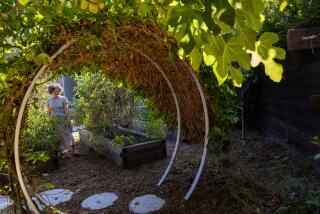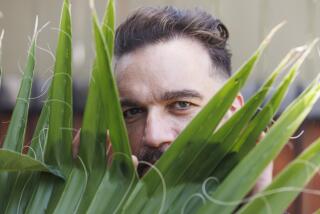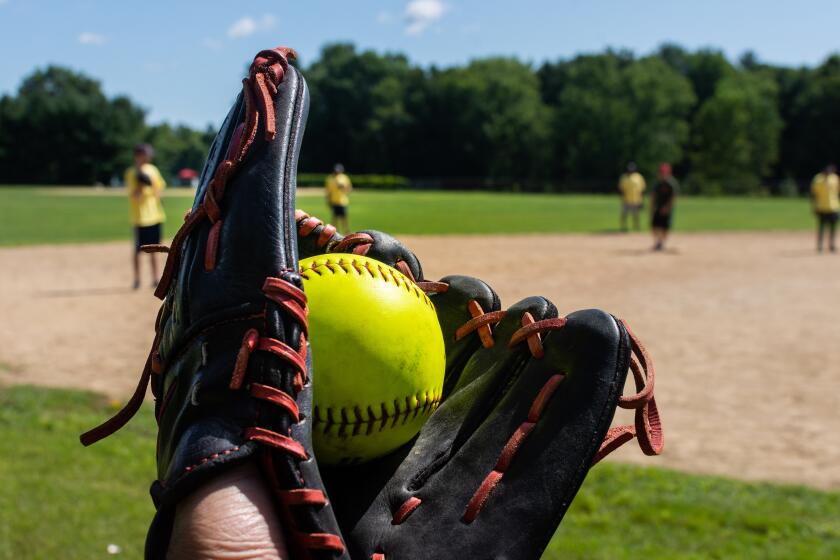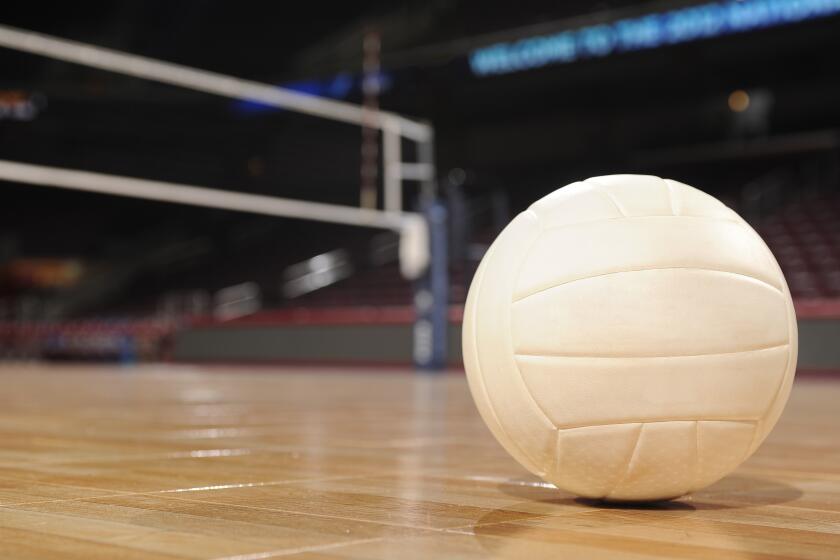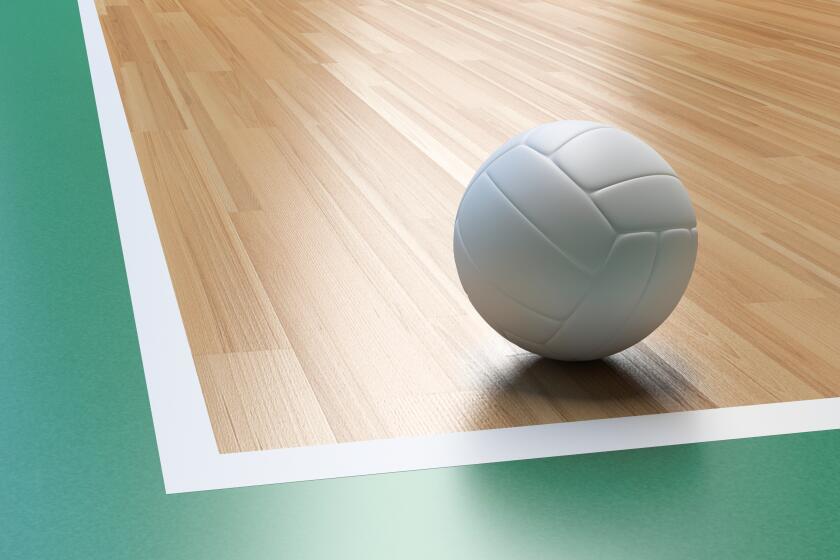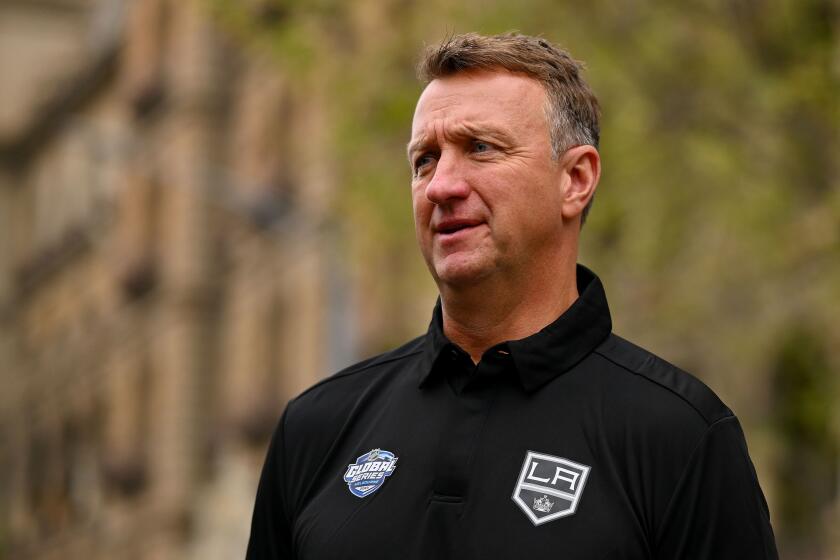Home is where the sand trap is
- Share via
There’s always something to do at the Arnold compound, as the family refers to their sprawling Encino residence, the essence of luxuriant indoor-outdoor living. From almost every room of the four wings, great expanses of glass -- three walls of floor-to-ceiling windows in the living room alone -- look out or open onto the woodsy hillside surrounding them. “There’s the pool, the sauna, the tennis court,” says Frederic Arnold, retired from running companies that built and sold his labor-saving inventions. “And now, the putting green.”
But wait. Can it be that the putting green is an artificial surface?
Take a stroll down to the garden of oleander and ivy, where the green undulates invitingly under a towering Chinese elm, and you’ll step on fine-bladed turf that’s surprisingly lifelike, with an ever-so-slightly spongy footing.
Drop a ball and tap it toward one of the five pins -- the one under a peach tree or the one next to a bird of paradise -- and you’ll encounter challenging dips and cunning slopes. One 30-foot putt is an optical illusion that looks as flat as a pool table but is actually downhill, and the green launches a ball hit a bit too hard off under the picnic table.
Hey, this is fun. And -- worms, beware -- it’s almost the real thing. Welcome to the era of household golf.
Dean Dingman, president of One Putt Green of La Jolla, which installed the Arnolds’ five-hole layout, said that technological advances in the mid-1990s allow America’s 26.2 million golfers to practice in their underwear. In seven years, One Putt crews have installed 2,500 greens in Southern California.
“Before, you had a choice. Either real grass or nylon carpeting over concrete, which is like putting on your driveway,” Dingman said. And since concrete doesn’t drain, old-style artificial greens didn’t take long to rot.
Enter All Pro Putting Greens, the Georgia-based company that developed the process in the mid-’90s and licenses it to One Putt. All Pro uses ersatz grass made of plastic fibers that resist weathering. The “grass” is laid over a deep layer of road-base material that can be formed into slopes.
With the “grass” in place, a rubber-like compound resembling coffee grounds is then spread over the surface, filling the blades until only 1/16 of an inch peeks out. The resulting greens are good not only for putting, but also can withstand 150-yard pitch shots.
The demand for the unreal thing keeps One Putt crews busy making seven installations a week.
“We have two types of customers,” Dingman said. “The ones with larger backyards and larger budgets can spend $10,000 to $20,000 for a good-size green. We have a lot of clients with smaller backyards where it’s a hassle to keep grass there, so we do a lot of projects in the $6,000 range.”
You can save thousands by buying a kit and doing it yourself.
“My friends are coming over all the time,” said Richard Dorus, a retired advertising executive with a green in Murietta. He set it seamlessly into the established landscaping, among the streams winding through the lot, and opted for a pitching tee about 12 yards out.
“I can pitch from the far side of the yard and use the streams as a water hazard,” he said.
Sure, golf purists remain who want the real thing.
But David Wienecke, an agronomist for the United States Golf Assn. Green Section for the Southwest region, doesn’t encourage such thinking. Maintaining a real green, he said, “is not something a normal homeowner will want to do. The amount of work is incomprehensible.”
Such warnings didn’t deter Mary Lee, an Orinda, Calif., resident who last year began building a natural green in the backyard of her father’s home in nearby Lafayette.
They start every morning by skimming the dew off the grass, she said. Then they mow it with a Toro Greensmaster Flex 21 mower that cost $8,000, which trims down to the 5/32nds of an inch long grass favored by pros. Finally, it’s time for fertilization checks and watering.
“You can’t miss monitoring it. We didn’t water for two days once, and it all wilted,” she said. “You really have to love what you’re doing.”
Not surprisingly, Dingman said, he gets a share of his business from natural-green owners who finally go unnatural.
For most of his customers, though, it all starts with a simple love of the game.
Back at their Encino compound, Arnold’s wife, Natalie, recalls learning to play as an 8-year-old at the knee of her golf-loving dad.
“I got to be pretty good,” she said. “I could shoot par. I played against boys on the high school team.”
But she left the game to have time to raise a son and two daughters.
What nudged them to call construction crews was an empty parking space.
“We had a motor home for years,” Arnold said. “We liked to drive around and see the sights.”
They eventually sold the motor home, which left behind a broad desertscape of gravel in the middle of the yard.
“Then Natalie got a postcard,” Arnold said.
It was an ad for artificial putting greens.
The green attracts a regular parade of friends and relatives.
Arnold found himself chuckling one day as a visitor trying to master the optical-illusion hole ran a ball off into the gravel.
He made his mark inventing labor-saving devices, but he cast an eye on a patch of ornamentals next to the green with something different in mind.
“There’s where I need a sand trap,” he said. “We don’t want something that’s too easy. We want to make it difficult.”
More to Read
Go beyond the scoreboard
Get the latest on L.A.'s teams in the daily Sports Report newsletter.
You may occasionally receive promotional content from the Los Angeles Times.
